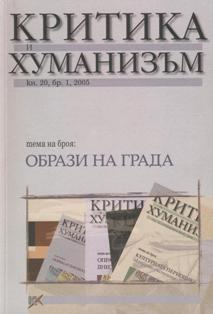Софийският трамвай (1901-1934). Дискурс върху градската модернизация
A discourse on city modernization: The construction of the tram network in Sofia (1901-1934)
Author(s): Elitsa StanoevaSubject(s): Social Sciences
Published by: Фондация за хуманитарни и социални изследвания - София
Keywords: city; modernization; urban; tram network; Sofia; citizen; traditional community; mass transport; public behavior
Summary/Abstract: Transport infrastructure of the modern city is not merely a novel urban amenity but moreover a new principle of organizing urban space. Inasmuch as inhabited space is not a neutral environment for the social interactions, individual and collective practices taking place within it but rather a receptacle of power and coercion, its structural transformation brings also a social transformation of the rituals of public conduct. The planning of the tramlines in Sofia followed the political logic of spatial arrangement and in accord with it the tram network reproduced newly established class stratification into spatial order. Certain social groups were privileged with an easy access to the new transportation service since their participation in public life was stimulated whereas less affluent social groups that were being gradually marginalized and pushed to the periphery of the city were more or less isolated from the mass transit routes. However, structural and visual order imposed by authorities was confronted by the routine praxis of residents. In regard to the electric transportation this confrontation manifested itself as a discrepancy between political expectations projected along the lines of accelerated modernization and adoption of European technical progress and pragmatic necessities of urban population projected along the lines of well established traditional practices and daily exchange. Tram travel was a new type of praxis requiring certain changes in all the other routine practices and therefore an overall adjustment of public behavior to the new modes of urban mobility. Around the turn of the century Sofia residents were accustomed to traveling in the city on foot and had adapted the trajectories of their daily mobility to this rhythm of life. Moreover, urban mass transport required anonymous forms of using public space and distanced forms of social interaction that were unusual for the traditional community. Through the history of constructing the tram network in Sofia the article analyzes the tension between political visions of urban arrangement and popular strategies of preserving habitual urban life. It tries to explicate the interrelation between spatial rearrangement and social reconfiguration and ultimately, the mutual dynamics between modernizing the city and modernizing the citizen.
Journal: Критика и хуманизъм
- Issue Year: 2005
- Issue No: 20
- Page Range: 259-282
- Page Count: 24
- Language: Bulgarian
- Content File-PDF

